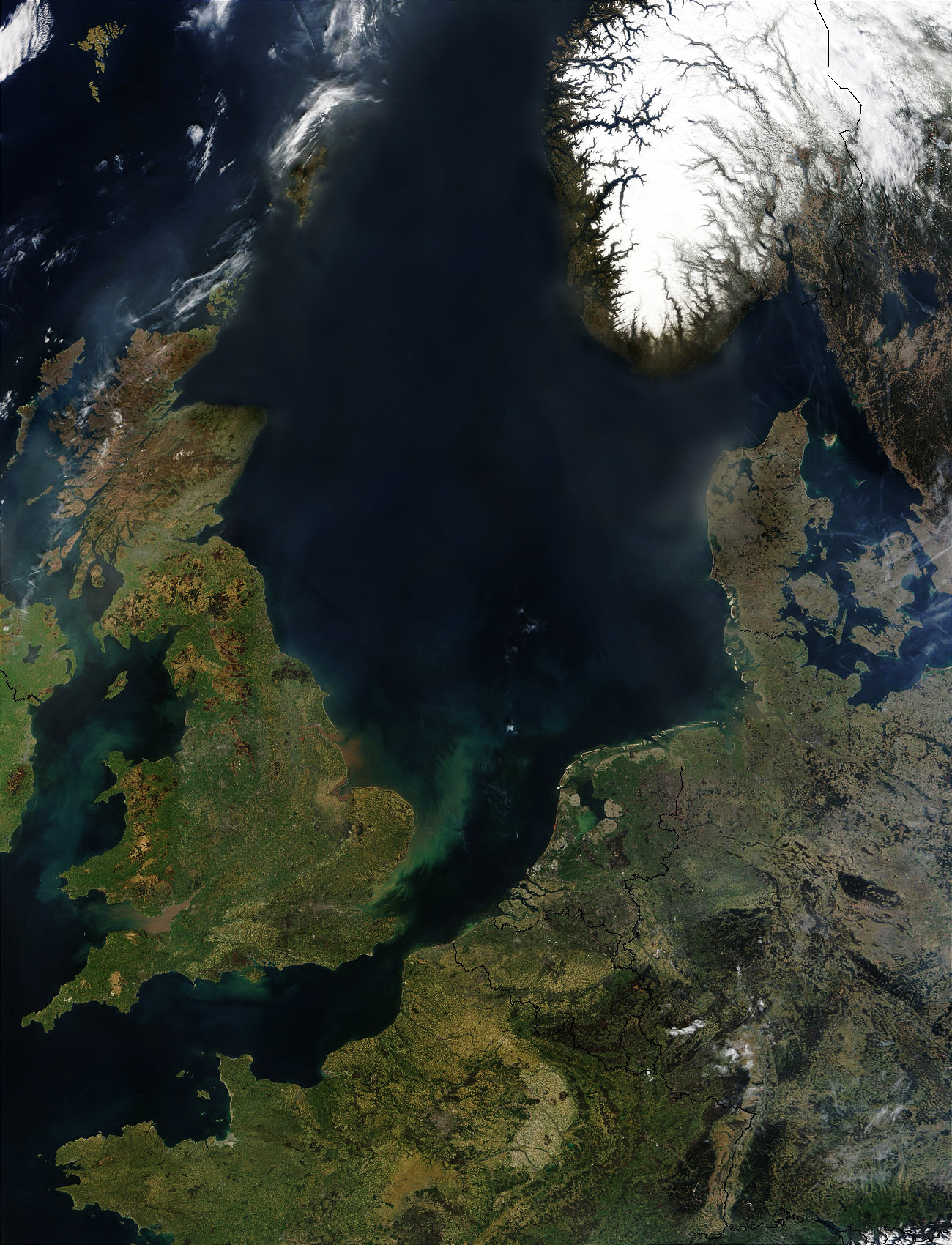(The North Sea)
A group of researchers from Germany's University of Kiel recently performed a study to rectify this problem in one of the most highly trafficked marine systems in the world--the German North Sea and the nearby Baltic Sea. This area is inhabited by several species of waterbird known to be particularly sensitive to human activity: red- and black-throated loons (Gavia stellata and G. arctica, respectively), common eiders (Somateria mollissima), long-tailed ducks (Clangula hyemalis), and common and white-winged scoters (Melanitta nigra and M. fusca, respectively). By measuring whether, and how, ship traffic affects the location and behavior of these species, the researchers hoped to understand the potential affects of aquatic vehicular activity on these and other birds throughout the region--information that could then be used to develop appropriate management plans.
The researchers were interested in three major questions. First, do birds distribute themselves in such a way as to avoid the bulk of ship traffic? This was ascertained by conducting survey flights over major shipping zones and counting how many loons were present within shipping lanes and between them. Second,
at what distances will seabirds flush when approached by shipping vessels? Experimental approaches were made towards flocks of sea ducks, and the researchers noted at what distance, and under what environmental conditions, the birds took flight. Third, how quickly do birds resume their "normal" behaviors after being disturbed by ship traffic? This was also determined experimentally, with point counts conducted before and after out-and-back boat trips.
(Red-throated loon, Gavia stellata)
Loons were much more likely to be found between shipping lanes than within them, suggesting that the birds were actively avoiding ship traffic--or, perhaps, indicating that the ships had scared off prey species, requiring the loons to relocate as well. When approached by experimental vessels, sea ducks usually avoided them by taking flight rather than by diving. This, however, was the only commonality across all birds: Some species (particularly common scoters) were much more skittish than others, but there was also high variability within species. Overall, common eiders were the most likely to stand their ground (so to speak), but behavior of all birds was also influenced by flock size, proximity to shipping lanes, and sea state. Interestingly, ducks within shipping lanes flushed much later than those in surrounding areas, suggesting that these birds may have begun to habituate to maritime traffic. After ship passages, different species returned to the trafficked area at different speeds, with common eiders and long-tailed ducks arriving most quickly, and wary common scoters arriving after the greatest delay.
(Common scoter, Melanitta nigra)
Although reactions to ship disturbances varied as a function of species identity, the overall patterns here suggest that sea birds are fairly sensitive to maritime traffic and attempt to avoid it as much as possible. For instance, while some flocks of common eiders remained in place as ships passed, other flocks flushed while vessels were still over 3 km away. The wariness displayed here has also been observed in response to offshore wind turbines, to which sea birds never seemed to habituate even after years of exposure. This suggests that the best mode of management may be to maintain a handful of shipping lanes from which large vessels never deviate, giving the birds "safe" zones in which they will not be disturbed. The only problem with this plan is that smaller recreational craft can generally travel where they like; thus, it may be necessary to introduce new restrictions for these vehicles.
Species-specific responses may stem from morphological variations that make some species better fliers (or, more specifically "flee-ers") than others. If so, then data on body size and wing shape may be useful in predicting which species will respond most negatively to human disturbance; this could be particularly helpful information when developing management plans in areas for which there are not enough funds to mount full-scale research efforts. However, the researchers caution that these behavioral data do not reflect potential physiological difficulties--such as increased heart rate and stress levels--associated with exposure to human disturbance. Likewise, birds that flee are spending time and energy on flight and relocation, when instead they could be foraging and bulking up. This trade-off is likely to have fitness implications over the long run.
(Common eider, Somateria mollissima)
Because of these other important variables, the researchers see their study as an important first step that needs to be followed with additional research. Future studies, for instance, might examine the effects of ship traffic in other seasons (when birds are in different stages of molt and have different life history motivations), under other vehicular conditions (e.g. different types of craft moving at various speeds), and on other response variables--including those related to physiology and energetics.
---
For supplementary images associated with this post, visit the Anthrophysis pin board on Pinterest.
Schwemmer, P., Mendel, B., Sonntag, N., Dierschke, V., and Garthe, S. 2011. Effects of ship traffic on seabirds in offshore waters: implications for marine conservation and spatial planning. Ecological Applications 21:1851-1860.
Thanks to the following websites for providing the images used in this post:
http://en.wikipedia.org/wiki/File:NASA_NorthSea1_2.jpg
http://moumn.org/gallery/?region=NA
http://www.wildlifeextra.com
http://shootingmyuniverse.blogspot.co.uk/2009/04/common-eiders.html



No comments:
Post a Comment